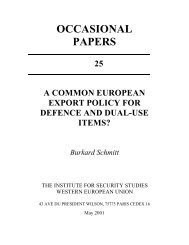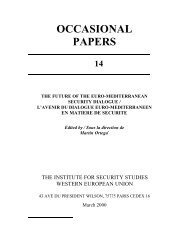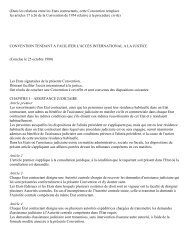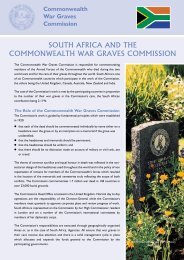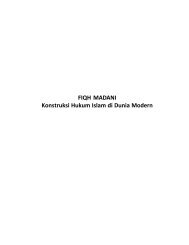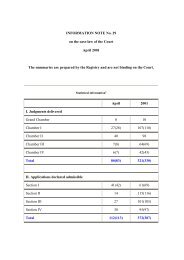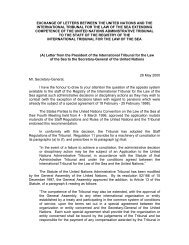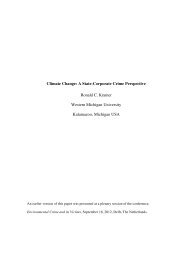C:\Annual Report 1998\AR1998 fo - Peace Palace Library
C:\Annual Report 1998\AR1998 fo - Peace Palace Library
C:\Annual Report 1998\AR1998 fo - Peace Palace Library
You also want an ePaper? Increase the reach of your titles
YUMPU automatically turns print PDFs into web optimized ePapers that Google loves.
Oil Market Developments<br />
In April, the price of the OPEC Basket recovered on the back of OPEC’s Extraordinary Meeting of the<br />
Conference in late March which announced a production cut of 1.245m b/d by Member Countries. The<br />
recovery continued into May when the monthly Basket price registered $13.14/b as there was news of<br />
further production cuts by OPEC at a time when US refiners were increasing their demand <strong>fo</strong>r crude<br />
in order to cover their gasoline requirements. However, WTI prices moved lower at the month’s end<br />
as storage in Cushing, Oklahoma (the delivery point of NYMEX WTI futures) was full, <strong>fo</strong>rcing many participants<br />
to sell their positions. The price of the Basket reversed its direction and reached a ten-year low of<br />
$11.67/b in June as the market considered the actual production cuts by OPEC and non-OPEC during<br />
April and May as insufficient to clear the stock overhang. The oversupply situation at a time when storage<br />
facilities were full took prices during the month to 12-year lows. The OPEC Conference decision at the<br />
end of June, to cut an additional 1.355m b/d, changed the price direction and it moved upwards. Total<br />
production cuts agreed upon reached 2.6m b/d <strong>fo</strong>r OPEC Members and 500,000 b/d <strong>fo</strong>r non-OPEC<br />
producers.<br />
Prices improved in July as OPEC Member Countries showed their commitment to the agreement<br />
through a series of announcements of deep cuts to their August exports. There was extra support<br />
from higher utility demand in Asia, concerns about unrest in Nigeria, good refiners’ margins in the<br />
Mediterranean and an expected decrease in North Sea supply due to field maintenance. The<br />
improvement in prices was reversed in the first half of August due to several factors: a high build<br />
in OECD stocks, especially products, led to fears of refinery run cuts at a time when North Sea<br />
maintenance was approaching its end, and the market understood then that certain OPEC Countries<br />
were not ready to cut production at a time when the production levels agreed upon in June were<br />
perceived by the market as not enough to clear the stock overhang. A rally started in the second<br />
half of August and continued throughout September on the back of higher cuts in export volumes<br />
from certain OPEC Members and as surveys showed that compliance with the June agreement reached<br />
90 per cent. This coincided with continuous draws on US crude stocks and bad weather conditions<br />
in the USA, which led to production disruptions in the Gulf of Mexico and the closure of refinery<br />
and import unloading facilities in the USA.<br />
In October, despite a reported 98 per cent compliance with the OPEC agreement and expectations of<br />
further cuts, heavy pressure on prices was exerted by fears of a possible recession in the economies of<br />
many countries, which coincided with the increase in North Sea production and the return of production<br />
from the Gulf of Mexico. The pressure increased in November, and the monthly Basket price dropped<br />
by $1.22/b, as there was a build up in crude stocks in the USA and heavy flows of imported crude.<br />
Mild weather and high stocks coincided with ample availability of North Sea supplies, thereby depressing<br />
European markets. In December, the monthly Basket price fell to $9.69/b as high product stocks<br />
26



